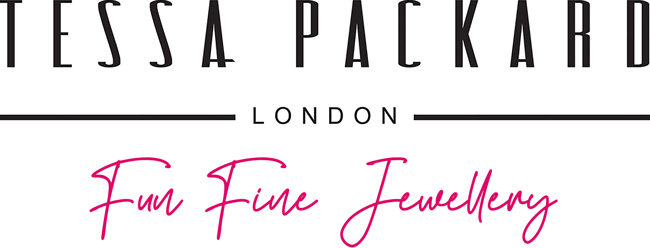
June 2021
Gold: The Facts
WHAT IS GOLD?
Gold is one of the most precious metals on this planet.
It is a chemical element with the symbol Au, from the Latin ‘aurum’. It occurs naturally in the ground, and in its pure form it is a bright, slightly reddish-yellow mineral. It is also dense, soft and malleable in its raw form.
Gold is one of the least reactive elements, which is why it is such a popular choice for every-day jewellery, such as wedding bands and engagement rings as it does not react with everyday chemicals or products, such as soap, detergent, washing up liquid and food.
In its unrefined form, gold usually occurs as nuggets or grains in rocks and rivers. It can frequently be found with silver, copper and palladium, as well as pyrite. Once refined, gold can be manipulated into a wide variety of form, from liquid to wire, bands to sheets. A single gram of gold can be beaten into a sheet of a square metre (11 square feet); it can also be turned into incredibly thin, delicate sheets, known as gold leaf.
As of 2019, an estimated 197,567 tons of gold existed above ground. This is equal to about a square cube of 22 metres. Half of the gold mined in the world is used to make jewellery, with about another 40% used for investments, 10% in industry (for example in the electricity sector and technology sector). Gold is also used in coloured-glass production and tooth restoration. In 2017 China was by far the world’s largest gold producer with over 440 tons a year.
GOLD IN JEWELLERY
Whereas most precious metals are grey or silvery white, pure gold is a yellow-red colour. However, once refined and mixed with other metal compounds, gold can become rose coloured (with the addition of copper) or white coloured (with the addition of palladium or nickel). These different coloured golds are then offered to the market in different levels of ‘fineness’ know as ‘carats’.
Gold carat weight is not the same as gemstone carat weight. With gold, the ‘carat’ refers to the purity of the gold – ie. What percentage of it is pure gold and what percentage of it is another metal (whereas with gemstones, ‘carat’ is a mass weight metric).
In the UK, gold jewellery comes in standard purity measures of 9ct, 18ct, 22ct and 24ct gold, with 9ct and 18ct gold being the most widely used for jewellery. These numbers signify the different ratios of pure gold to other metal alloys mixed in, such as silver, copper or palladium. Here is a breakdown of gold purity levels for the different carat weights:
9ct gold – 37.5% gold
18ct gold – 75.0% gold
22ct gold – 91.6% gold
24ct gold (pure gold) – 99.0% gold
Because gold is a very soft ore, generally speaking, the higher the carat weight, the softer the metal. This means 9ct gold tends to be more scratch-resistant than 18ct gold. And in turn, 24ct gold is very soft and malleable, which means it is not suited to use in jewellery as it not hard-wearing enough (it can be easily scratched with a fingernail). 22ct gold is occasionally used for very simple jewellery items such as plain wedding bands or very simple ear studs but is rarely used alongside set gemstones (Indian jewellery is an exception, and much of the traditional fine jewellery produced there employs a very high percentage of gold ore, usually registering at 22ct or higher).
It is also true that the higher the carat weight of gold, the more bright and yellow the metal appears, with 24ct gold being the most lustrous and intense.
9ct and 18ct gold are most frequently used in the UK because they are the most hard-wearing versions. 18ct yellow gold is more pure thus expensive per gram than 9ct gold, but 9ct has a higher percentage of other metals, and therefore tends to be considered ‘harder’ than 18ct yellow gold (as well as being the more affordable option). To make matters more confusing, however, 18ct gold is more malleable so it actually is more durable than 9ct gold because it withstands knocks and everyday wear and tear better than 9ct (which is harder but more brittle).
It is illegal in the UK to market and sell an item of jewellery as ‘gold’ if it registers as containing less than 37.5% gold (9ct).
WEARING GOLD JEWELLERY
Different metals can wear each other over time, especially if worn next to each other. For example, a 9ct gold ring could wear an 18ct gold ring down if they were worn every day, all day on the same or adjacent fingers. For that reason, we recommend buying or designing a wedding band in the same carat weight and metal as your engagement ring. If your engagement ring is 18ct gold we would suggest having a wedding band that is also 18ct gold.
Because platinum is much stronger than gold we would generally advise against wearing platinum jewellery and gold jewellery together. If you like the contrast of silver and yellow metals, the best option would be to pair 18ct yellow gold and 18ct white gold together. If mixing metals cannot be avoided, we recommend keeping a close eye on areas that are often rubbed, such as the back of wedding and engagement bands, as well as the stone settings, to check for any substantial wear and erosion. Significant abrasion can reduce the security and structural integrity of such jewellery pieces and risk the item breaking (or stones becoming lost).
CARING FOR GOLD JEWELLERY
Pure gold is an inert metal and does not oxidise or tarnish, so gold jewellery is about as low maintenance as you can get. 9ct gold – with its lower finesse – can start to tarnish over time due to its higher silver content ratio, but this process is still much much slower than with sterling silver jewellery.
Gold is safe to wear in the bath, shower or sea, but only if it is in good condition otherwise (like any jewellery) it risks falling off.
Gold is a soft material so care should be taken to avoid it becoming banged, scratched, dented or misshaped. It’s probably a good idea to remove gold jewellery before carrying out any activity which may risk impact, such as gardening or playing sport. It’s also important to store individual gold items in individual boxes or pouches to prevent pieces becoming scratched by each other. Diamonds are particularly susceptible to scratching fine or precious metals as they are so hard.
If you would like to clean your gold jewellery, you can either gently rub it with a specially designed gold polishing cloth that has been impregnated with cleaning agents (we like Town Talk Gold Polishing Cloths), or you can soak your gold jewellery in warm, soapy water and gently scrub with an old, soft-bristled toothbrush, before rinsing in clean water and drying well. Failing that, gold jewellery can always be brought back to life with a professional clean with the help of a jeweller.
We recommend regularly cleaning your gold jewellery, especially if gem-set, to ensure dirt does not become embedded into the settings and cause stones to become loose.
Please note that white gold jewellery needs a little more care overall as it tends to be rhodium-plated to make the metal appear whiter. Without this plating white gold can gold carry a subtle yellowish grey hue. Rhodium is a very hard metal, but even this plating wears over time and may require re-coating. Generally speaking, a regularly worn item of white gold jewellery, such as a white gold engagement ring, may require re-plating every one or two years.

